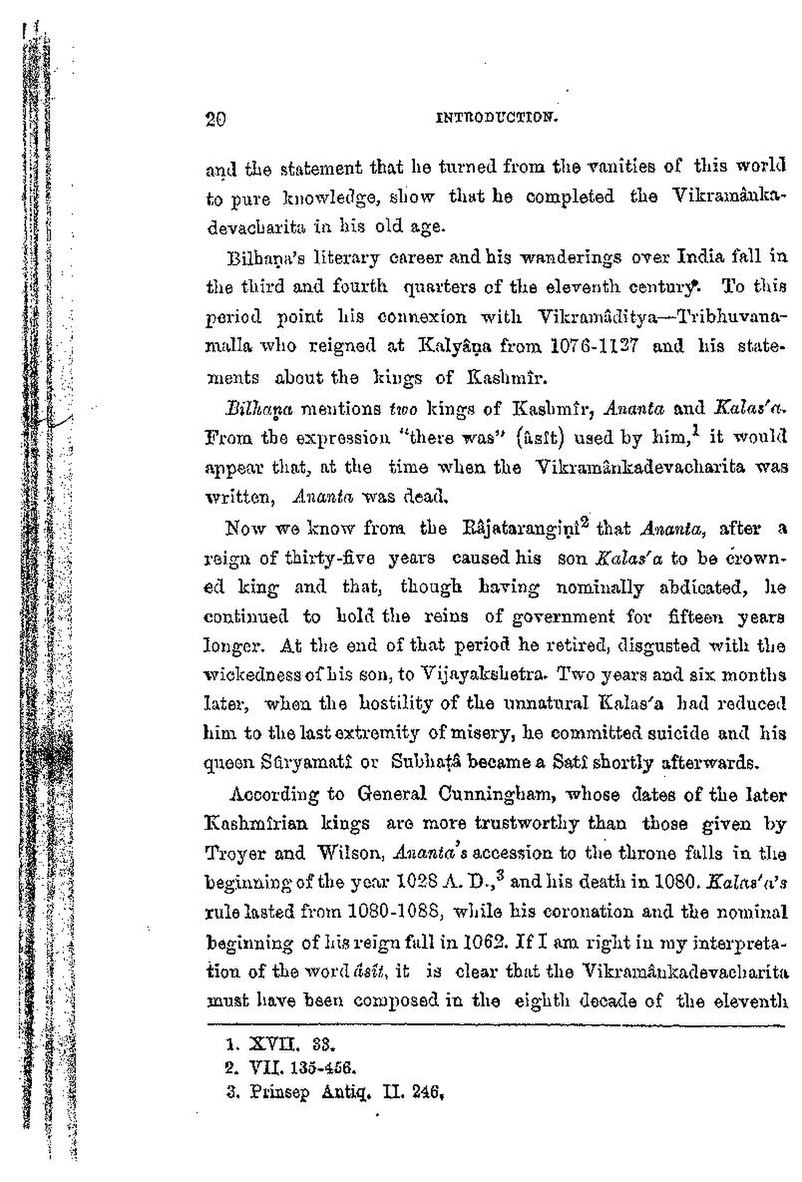E
20
INTRODUCTION.
and the statement that he turned from the vanities of this world
to pure knowledge, sliow that he completed the Vikramânka-
devacuarita in his old age.
Bilhana's literary career and his wanderings over India fall in
the third and fourth quarters of the eleventh century. To this
period point is connexion with Vikramaditya-Tribhuvana-
malla who reigned at Kalyana from 1076-1137 and his state-
ments about the kings of Kashmir.
Bilhana mentions two kings of Kashmir, Ananta and Kalas'a.
From the expression "there was" (asit) used by him, it would
appear that, at the time when the Vikramânkadevacharita was
written, Ananta was dead.
Now we know from the Rajatarangini2 that Ananta, after a
reign of thirty-five years caused his son Kalas'a to be crown-
ed king and that, though having nominally abdicated, he
continued to hold the reins of government for fifteen years
Jonger. At the end of that period he retired, disgusted with the
wickedness of his son, to Vijayakshetra. Two years and six months
later, when the hostility of the unnatural Kalas'a had reduced
him to the last extremity of misery, he committed suicide and his
queen Sûryamatf or Subhatâ became a Satî shortly afterwards.
According to General Cunningham, whose dates of the later
Kashmirian kings are more trustworthy than those given by
Troyer and Wilson, Ananta's accession to the throne falls in the
beginning of the year 1028 A. D.,³ and his death in 1080. Kalas'a's
rule lasted from 1080-1088, while his coronation and the nominal
beginning of his reign full in 1062. If I am right in my interpreta-
tion of the word asit, it is clear that the Vikramânkadevacharíta
must have been composed in the eighth decade of the eleventh
1. XVII. 38.
2. VII. 135-456.
3. Prinsep Antiq. II. 246,
पृष्ठम्:विक्रमाङ्कदेवचरितम् - बिल्हण.pdf/२४
एतत् पृष्ठम् अपरिष्कृतम् अस्ति

